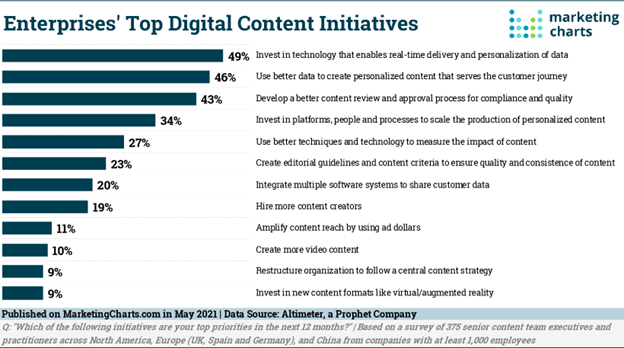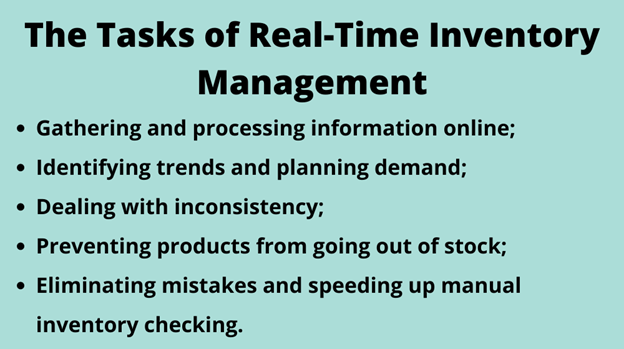
Real-Time eCommerce analytics means fast decision-making as the data is processed right upon entering the database.
Customer behavior and trends change rapidly. Suppose an email campaign was effective in bringing considerable traffic to the store. But now, clients stopped responding to this strategy. Money is going down the drain. Competitors are ready to lure your clients away. How can you improve the business performance? Employ analytics to discover the underperforming parts of the store.
Luckily, you can do it immediately with real-time eCommerce analytics. This type of analytics denotes interpreting data instantly upon entering the database, not after a week or month. It influences the eCommerce sphere, allowing business owners to decrease the time between data acquisition and decision making.
This post will outline the benefits of real-time analytics for eCommerce. A few points I will raise are improving customer service, more opportunities for personalization, enhancing inventory management, and more.
5 Applications of Real-Time eCommerce Analytics
1. Determining Customers’ Reaction to Your Campaigns
The first way to leverage real-time analytics is to see how the target audience responds to campaigns. You can study the number of visitors from a particular region, when they’re most active, and which ads, emails, and content attract them better.
Take offline shopping as an example. The traffic fluctuations in a physical store are visible during the day without any tools. In the digital world, it’s impossible to go to the shopping floor. But it’s possible to employ real-time analytics tools to gather data from the visitors’ activities.
This phenomenon is known as pattern recognition. It enables you to conduct A/B testing. It involves taking one element, such as a call to action, and changing one facet. Let it be a button color. You show a red button to one group of visitors and a green one to another.
The key point is to focus only on one aspect of a store and tweak it. Then, you dive into real-time analytics to gain insights into what button resulted in more conversions. It applies to many website elements: headlines, deals, images, etc. Analyzing real-time data can save merchants money on inefficient options.
2. Leveraging Data for Precise Personalization
The tremendous amount of information creates new ways to improve the business. But the most tricky part is to marry the siloed information, scattered around all the tools, such as CRMs, email automation, and other platforms.
Process this data for it to work to your advantage and take it as a basis to enhance the store. One of the options is to personalize the shopping experience. Use customer demographics, interests, past purchases, etc., to tailor the content to customer preferences.
Personalization remains critical for increasing conversion rates. Relevant content hits the prospects’ needs, providing value to them without being too vague and general. Marketing Charts states that real-time delivery and data personalization will be a top priority for almost half (49%) of businesses. 46% of respondents will delve deeper into data acquisition and serve even more personalized content.

Image credit: Marketing Charts
Gather first and third-party information and route to one system. Create a customer profile, including gender, age, device type, and location. This information will help you build targeted content not just for existing clients but for anonymous users based on similar interests.
3. Managing Inventory to Prepare for Higher Demands
How does real-time eCommerce analytics enhance business efficiency? A case in point is inventory management. Dealing with numerous orders requires business owners to check item availability constantly. Because if a product goes out of stock before or during the periods of peak demand, you won’t have time to order a sufficient amount and miss dozens of potential customers.
But the opposite situation may arise. What if you bought too many items that now remain on the shelves and lose their value with time? Expired or unneeded items are wasted opportunities to sell a more popular thing.
Study real-time analytics to keep the balance between supply and demand. Is the product increasing in popularity? Then, you should timely replenish it. Analytics indicates how the product’s demand changes throughout the week or month. It can help you plan the holiday season campaign and launch targeted ads to promote the goods.

4. Boosting Customer Service
Customer service is a decisive factor when purchasing from a brand. It’s important to first-time buyers and repeat ones as well. According to statistics, 81% of shoppers will make another purchase from a brand with excellent customer service. The quality of customer service remains critical for 70% of clients, and 91% of respondents consider it essential to become loyal customers or not.
But the number of channels to communicate and assist customers expands. What are the ways to track their perception of the store? Analyze customer data and metrics in real-time. Check what they prefer on the website, what they write on your social media channels, and how they respond to the polls.
As data processing runs immediately, you can quickly respond to complaints. Take negative comments and sentiment analysis to enhance customer service, fix problems, and prevent them in the future. As soon as the situation takes a risky route, you can notice and stop it. For example, trigger communication with the needed representatives, send a better product, or apologize personally for the inconvenience.
5. Setting Dynamic Pricing for Attracting More Customers
Prospects perform extensive research before buying products. They may read reviews, check delivery terms, and compare prices on different websites. However, rates may change due to the season, demand, trends, and other factors. It’s essential to present competitive prices to maximize revenue without diverting visitors from your retail company.
Use dynamic pricing to manage offers. It’s a method of adapting prices to the market. Current dynamic pricing relies on historical data, artificial intelligence, and machine learning to determine the best prices for a store. Ride-sharing businesses like Uber and Lyft employ dynamic pricing all the time. Days with unfavorable weather conditions or rush hour affect the service costs to gain additional profits from these conditions.
eCommerce isn’t an exception. We expect prices to go higher on trendy products, while basic items are usually stable. Below are the most notable retailers with integrated dynamic pricing.
Employ real-time data to stay updated. As a result, you will be able to increase prices on the products with higher interest and decrease them if something sells worse.
To Wrap Up
As more people move to online shopping, merchants should cover more data and channels to ensure the best user experience. How can they achieve it and adapt to changing customer demands? With real-time eCommerce analytics. I’ve covered five ways how it impacts online retail. However, its possibilities go beyond pattern recognition, personalization, inventory management, customer service, and dynamic pricing.
Real-time data can help you plan the most effective strategies and stop those without beneficial results. Merge this data with website metrics to improve conversion rates, lower bounce rates, and build customer loyalty. But don’t limit yourself to on-the-spot decisions. Utilize this information to forecast future trends, boost productivity, and ensure business success in the long run.




























